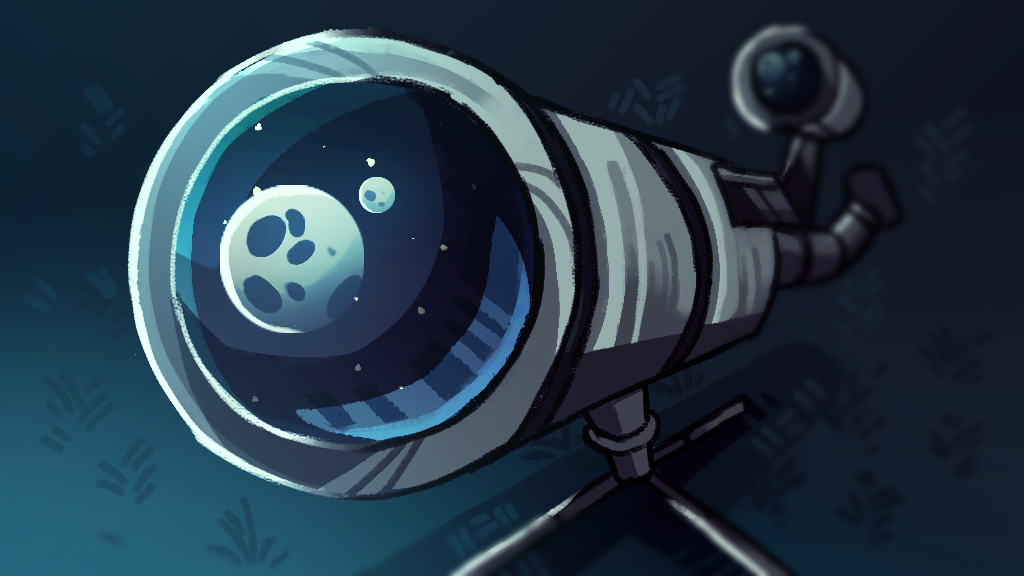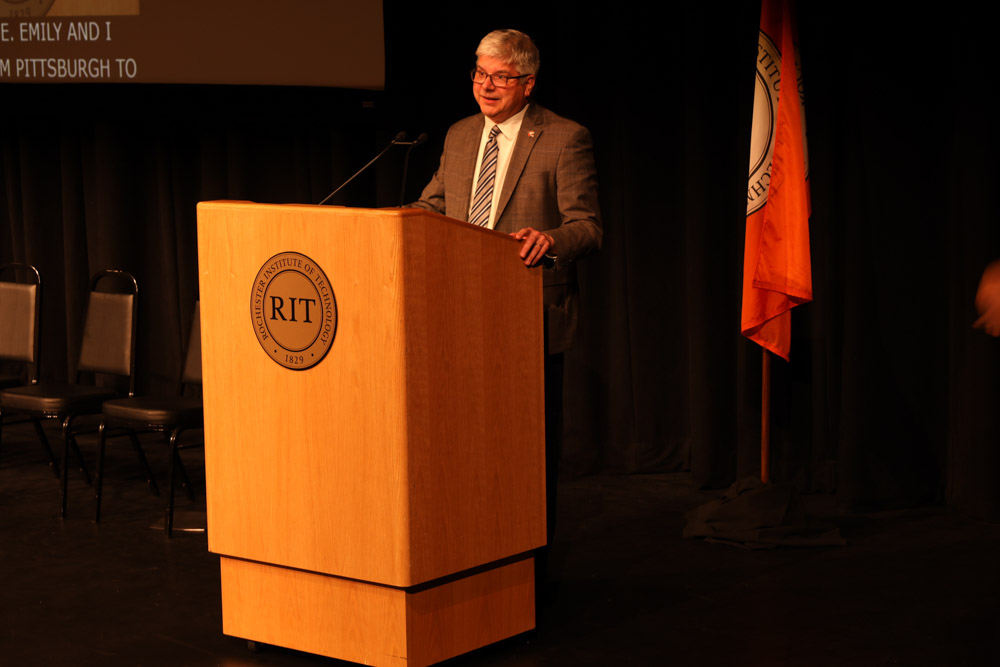Back in Feb. 15, 2020 a satellite temporarily captured by Earth’s orbit escaped the planet’s gravitational pull and resumed its journey around the sun, according to The Atlantic. The satellite, formally called 2020 CD3, was detected by the Catalina Sky Survey (CSS) and was believed to have served as a short-term moon of Earth for the past few years.
A Temporary Moon
Unlike our permanent moon, 2020 CD3’s orbit was not a stable one. The competing pulls of Earth and the moon’s respective gravities affected its trajectory, resulting in a chaotic path that has since been simulated.
“The moon is tugging on it, the earth is tugging on it and it probably started out in a not-so-circular orbit, and so … it got sucked in at one point and then it got flung out,” said Don Figer, director of RIT’s Center for Detectors.
The actual composition and origins of the satellite are harder to determine.
“We don’t know a hundred percent where [2020 CD3] came from, but it could have come from leftover debris in the asteroid belt that drifted into an Earth-like orbit,” Figer explained.
Professor Michael Richmond of RIT’s School of Astronomy and Physics spoke further about the potential origins of this object.
“If this were a rocky remnant of the early solar system … orbiting around in the solar system for four and a half billion years, and it just happens to pass close to the earth and get captured, that would be pretty exciting,” Richmond said.
He stated that although this is the most likely explanation, there is one alternative possibility.
“It might have been a man-made object. Some sort of leftover rocket booster, or a piece of a spacecraft … any object that’s launched from Earth will naturally have an orbit that comes back into the general vicinity of the earth, if you wait long enough,” Richmond said.
Other details about the satellite were easier for astronomers to verify.
“Whatever [2020 CD3] is, it’s relatively small … in human size terms, it’s probably the size of a big car or a small truck,” Richmond explained.
As of this year, only one other temporarily captured object like this has been detected. An asteroid named 2006 RH120 was found orbiting Earth in 2006 and served as an irregular moon for about a year, before resuming its orbit around the sun, according to a report published by the American Institute of Aeronautics and Astronautics.
“It’s not very common,” Figer said. “Or it’s not commonly observed. Let’s say it that way, because it’s not as if we’ve had the technology for very long to be able to detect that.”
Detecting Near-Earth Objects
The National Aeronautics and Space Administration is congressionally mandated to detect and track Near-Earth Objects (NEOs) that might pose a potential threat to Earth. There are various active projects, both within the U.S. and internationally, that are dedicated to cataloging these NEOs.
2020 CD3 was found by one such project, the CSS, as mentioned earlier. Astronomers Teddy Pruyne and Kacper Wierzchos are credited with its discovery. The images from its original detection can be viewed on the CSS website.
“Back [in February], it was passing relatively close to the Earth; and therefore was relatively bright, because the closer things are to the Earth, the brighter they appear,” Richmond said. “Several telescopes picked it up and said, ‘There’s an object over there that isn’t in our databases.’ Over the next week, other observatories also saw it [and] measured its position several times. And based upon those positions, astronomers were able to calculate an orbit.”
Those calculations allowed astronomers to determine both where the satellite was going and where it had previously been. Typically, objects in our solar system have a heliocentric (sun-centered) orbit. 2020 CD3’s path was unusual.
“Its orbit was interrupted by this close passage of the earth and for some period of time, maybe only a year or two, maybe as much as five or ten years, it was temporarily orbiting around close to the earth and close to the moon,” Richmond said.
He continued, “Instead of just making a single pass and going off on its merry way, not to come back again, this one came really close, its orbit got twisted, and it was sort of stuck in a holding pattern.”
The Benefits of Studying Natural Satellites
According to Figer, an object the size of 2020 CD3 doesn’t pose any threat to Earth, as it would simply break up in the atmosphere if it drifted too close.
Larger NEOs are potentially hazardous, however. As Richmond explained, studying smaller objects like 2020 CD3 allows astronomers to better understand objects that could cause serious damage if they were to enter Earth’s atmosphere.
“The reason why we found this object is because there are astronomers scanning the skies every clear night trying to measure the population of these little things that flit by and just leave or, like this one, flit by and are temporarily captured. The more we know about the teeny tiny ones, the better we’ll be able to predict how frequently the big ones may come,” he said.
There are also many potential scientific benefits to studying objects like 2020 CD3.
“You could potentially grab onto this thing [2020 CD3], or you could grab a sample from this thing, without having to go very far … [you could] mine it and then pull off its minerals and rocks, and then you might have a direct look into the material that made the solar system,” Figer said.
Such studies provide insight into the formation of the earth. According to Figer, the discovery of water, oxygen or complex molecules on an asteroid or other NEOs could even provide information on the source of life on our planet.
Earth’s temporary moon may be gone, but there is still much to be learned from objects like 2020 CD3.







